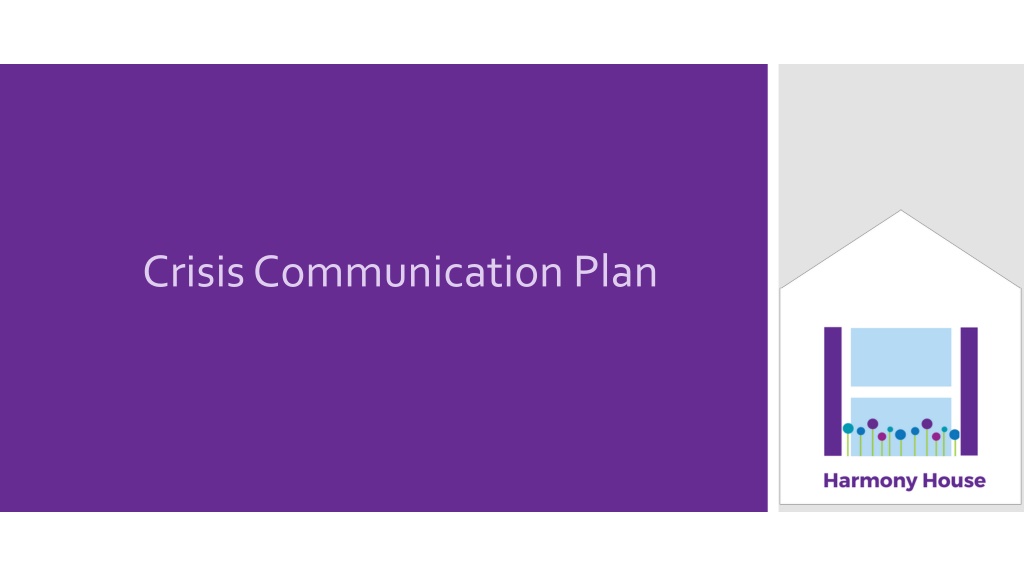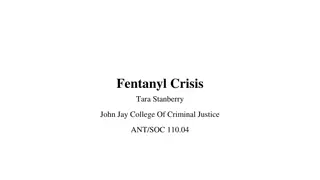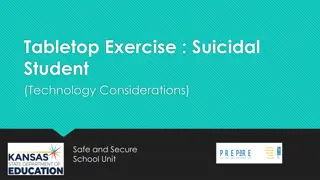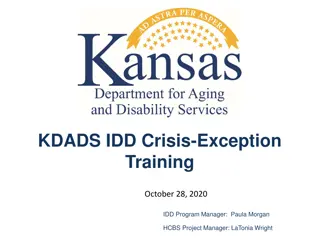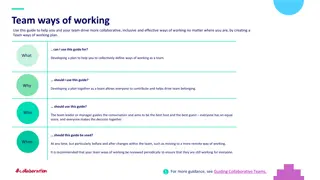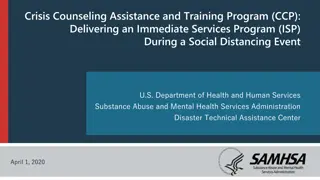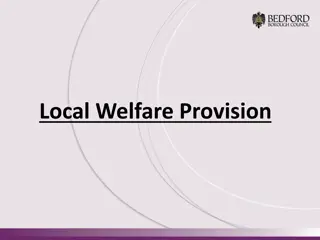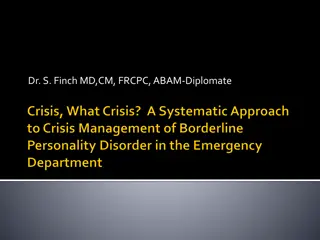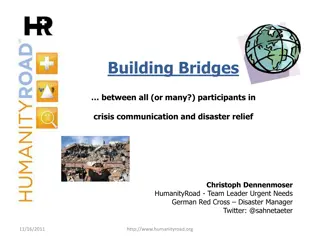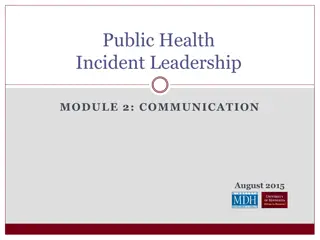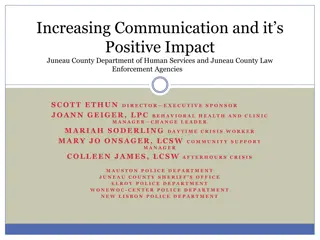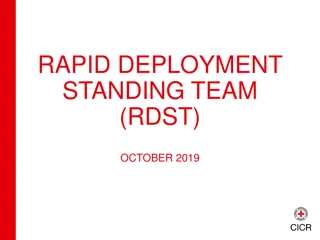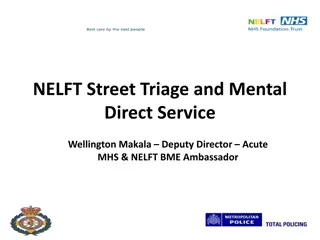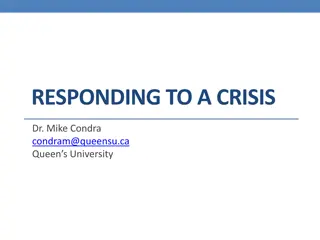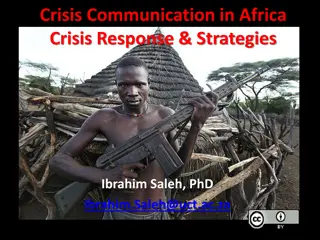Crisis Communication Plan and Team Overview
Crisis communication plans are essential for organizations to effectively communicate with stakeholders during a crisis. This detailed plan outlines key steps, important contacts, and the roles of the crisis management team. It emphasizes the importance of evaluating each crisis situation individually and utilizing appropriate communication channels to ensure timely and accurate information dissemination.
Uploaded on Oct 01, 2024 | 0 Views
Download Presentation

Please find below an Image/Link to download the presentation.
The content on the website is provided AS IS for your information and personal use only. It may not be sold, licensed, or shared on other websites without obtaining consent from the author. Download presentation by click this link. If you encounter any issues during the download, it is possible that the publisher has removed the file from their server.
E N D
Presentation Transcript
The purpose of a crisis communication plan is to provide steps and actions to follow in communicating with all stakeholders after a crisis has occurred. Stakeholders include: Residents (including Talia as needed) Employees Volunteers Board Donors Sponsors/Supporters Community Members PURPOSE
CRISIS MANAGEMENT TEAM KEY MEDIA CONTACTS Jared Alexander: Executive Director (417) 576-0707; jareda@myharmonyhouse.org Springfield Daily Citizen: Jackie Rehwald 417-291-6350 jrehwald@sgfcitizen.org Michaela Bennet: Philanthropy Director (417) 894-7977; michaelab@myharmonyhouse.org SBJ: Jennifer Jackson jjackson@sbj.net Geoff Pickle (Web Editor) gpickle@sbi.net 417-831-3238 Sarah Spillman: Operations Director (314) 265-3231; sarahs@myharmonyhouse.org IMPORTANT CONTACTS Jackie Langdon: Communications Director (417) 425-1384; jackiel@myharmonyhouse.org KY3: newsalerts@ky3.com Kristen Snell: Community Outreach Director (417) 619-7394; kristens@myharmonyhouse.org KSPR: news@kspr.com KOLR: news@kolr.com Carol Wendt: Volunteer Coordinator (727) 485-5123; carolw@myharmonyhouse.org KRBK: news@krbktv.com Kyle Hall: Facilities & Security Coordinator (417) 521-4008; kyleh@myharmonyhouse.org Media list is locatedin the user share here: P:\jackiel\Media Relations\Media Lists If key members (directors) of the Crisis Management Team are unavailable, responsibility will shift to the Case Management and Advocate Coordinators.
CRISIS ANTICIPATION
Each crisis is situational and not every stakeholder will need to be contacted. Evaluate the urgency of the situation and the most appropriate audience for communication. COMMUNICATION CHANNELS
Safety: Make sure everyone is okay. Contact proper authorities if necessary. Notification: Notify the Executive Director immediately. Crisis Team: Evaluate the situation and determine the messages that need to be released, which channels should be used, and when this information should be shared publicly. Before Going Public: Assemble the crisis team: Determine crisis communications lead person who is responsible for ensuring all tasks are completed (most likely the director of communications). Determine the crisis communication spokesperson who will answer all media and other inquiries (most likely the Executive Director). In an ideal world, this person will be the person who ALWAYS communicates with the public, regardless of the situation. This establishes trust and consistent language. Compile the facts. If you have to act before you have all the facts, act where you must, but wait for the facts when you can. Determine appropriate response/action. Create plan of action for internal and external communications and how best to disperse messages to each audience. Develop factual, detailed messages that reflect the status of the crisis, Harmony House s response, and, if possible, proactive steps to resolve the situation. Prepare talking points and provide a script for the receptionist receiving incoming calls. Determine if web and/or voicemail updates are necessary. Assess what resources are necessary to manage the crisis (i.e. cell-phone availability, press conference needs, on-location resources signs, lectern, visuals, etc). Keep the Board informed IMMEDIATE RESPONSE CHECKLIST
Going Public: Begin placing telephone calls to critical internal audiences, including staff, board and/or legislators, etc. Begin media and other external audience outreach, use press release if appropriate. Update web site and organization phone mail, if needed. Evaluate message effectiveness as the situation progresses. IMMEDIATE RESPONSE CHECKLIST Implement methods for updating key audiences with ongoing information.
The following questions can help determine the most appropriate crisis communication response: What is the situation? What will happen next? What staff members need to be involved? What immediate steps need to be taken? What is known and who already knows it? Is there potential public interest? Could this issue become bigger than a small story on the evening news? SITUATIONAL ASSESSMENT Who will be affected? What are people feeling what emotions need to be considered? What information is needed and who beyond organizational staff need to get it? When will it be available? What CAN and CAN T be said? What are Harmony House s privacy policies? Is legal or PR counsel needed? How will the response be communicated?
The media will greatly influence how the public will perceive the organization in the time of a crisis. Under ordinary circumstances, the Crisis Team will determine who the designated spokesperson is for the crisis event. However, if the media arrives unexpectedly or the crisis is such that an immediate response is required, everyone should understand the simple do s and don ts of media relations. DO Prepare as much as possible and try to anticipate what will be asked Keep to the facts and use simple answers Always be truthful if you don t know the answer, just tell them Take time and think about your response Dress for the occasion if possible Know your goal for the interview MEDIA RELATIONS DON T Say no comment you will look suspicious Fall victim to what if questions stick to the facts Go off the record - there is no such thing! Forget the audience and who the message is intended to reach Get angry and use negative words Introduce new issues DO NOT USE YOUR PERSONAL SOCIAL MEDIA ACCOUNTS TO RELAY NEWS ABOUT A CRISIS OR TO SPEAK FOR HARMONY HOUSE.
FREQUENTLY ASKED QUESTIONS: When and where did it happen? Who accepts responsibility for what happened? Who is in charge? Are those that are harmed receiving help? Who was harmed? Is there any immediate danger? Why did this happen? Are the authorities involved? What was the cause? What are the names of those involved/harmed? Is the situation under control? Can we talk to them? MEDIA QUESTIONS Are the residents in danger? Did you have any forewarning this would happen? What is being changed? Could this happen again? What can be prevented for the next time? Who is conducting the investigation? How are employees and/or volunteers affected? Have you told us everything you know? How does this affect the community? Does Harmony House accept responsibility? How is Harmony House addressing this issue? What is the worst case scenario? How serious is the issue? When will we find out more? Is Harmony House Safe? What would you like to say to the victims? What are you advising people to do? What would you like to say to the community? When where you notified something had happened?
MESSAGE MAP
